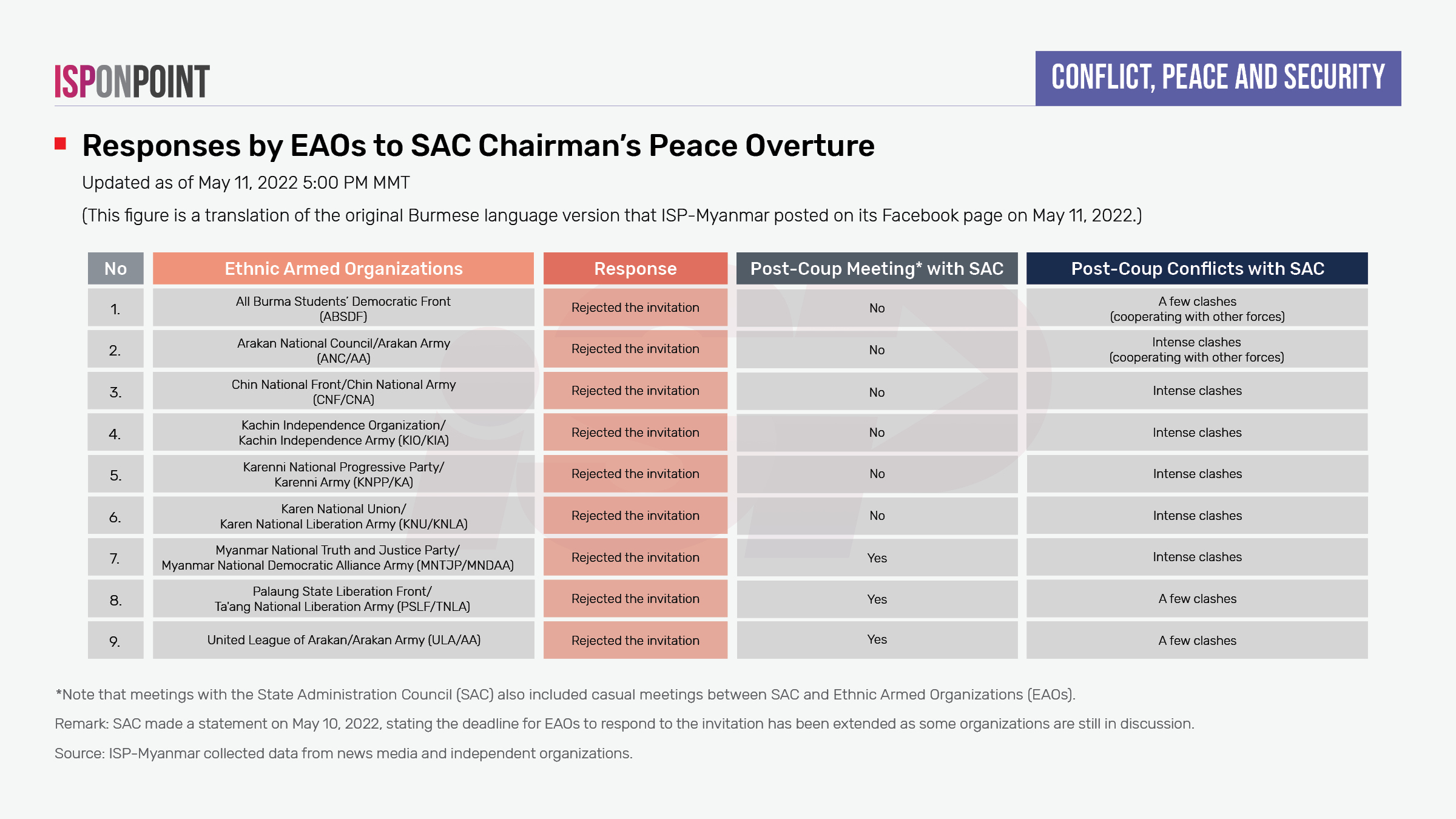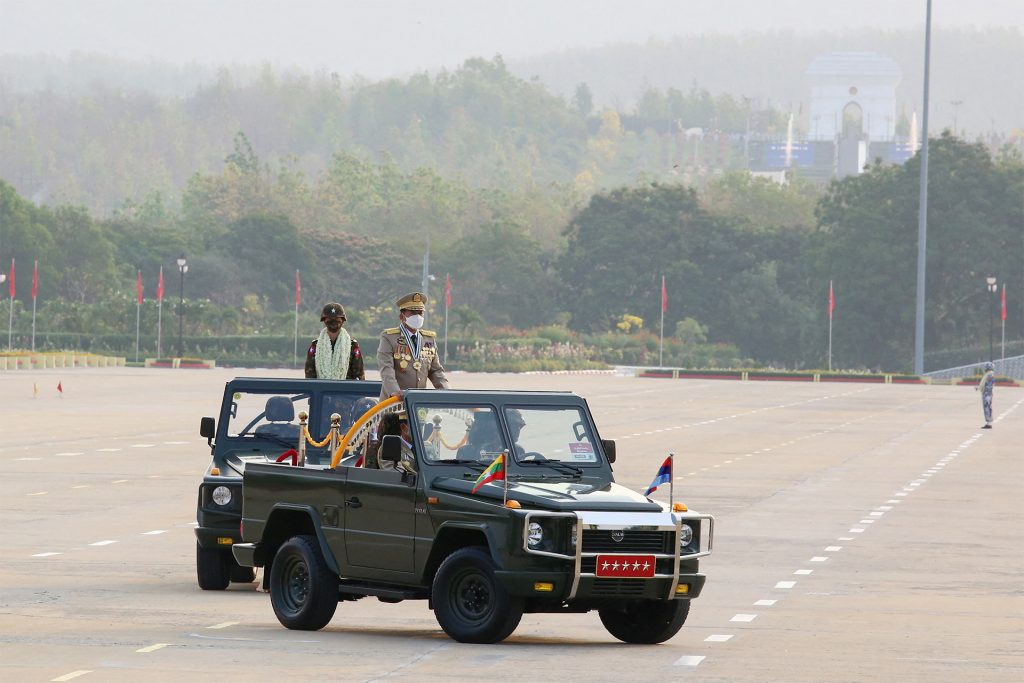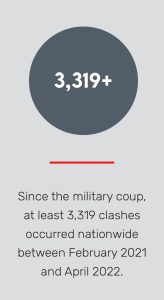On Point No. 9
(This article is a translation of the original Burmese language version that ISP-Myanmar posted on its Facebook page on May 11, 2022.)
∎ Events
Sr. Gen. Min Aung Hlaing, Chairman of the State Administration Council (SAC), personally invited the heads of Ethnic Armed Organizations (EAOs) to talk about peace on April 22, 2022. As of May 9, the deadline to respond to the offer, only 10 out of 21 EAOs answered the call to meet.
∎ Preliminary analysis
Many of the EAOs engaged in intense fighting with the Myanmar military since the coup in February 2021 rejected the invitation to meet with the SAC chairman. These included the Kachin Independence Organization (KIO/KIA), the Karen National Union (KNU/KNLA), the Karenni National Progressive Party (KNPP/KA), the Chin National Front (CNF/CNA) and the United League of Arakan (ULA/AA). The KIA, KNU, KNPP, and CNF issued statements saying that any talks should include all appropriate stakeholders as an important step in resolving the conflict.
The EAO responses to the SAC Chairman highlight three situations.
First, the situation in the country has not resembled the “old normal” since the military coup. Different stakeholders have worked hard to bring the country to a state of “new normal” that has not yet materialized despite their best efforts. Political stability in the country since the coup has deteriorated dramatically and remains unconducive to normal methods of conflict resolution. It seems that the SAC chairman cannot make sense of this post-normal situation and instead continues to rely on old methods that leave Myanmar’s political future unclear.
Second, the pressure of social media has made a tremendous impact on all stakeholders in the conflict. If the initial secrecy measures essential for every dialogue cannot be upheld, the whole thing could fall apart immediately. It is evident that the efforts of U.N. Special Envoy Noeleen Heyzer have failed for this reason.
Finally, the SAC seemingly lacks the strong support of technocrats and lobbyists that the previous pseudo-civilian U Thein Sein administration enjoyed during its peace efforts in 2010-2015. Many EAO leaders at that time judged U Thein Sein to be “sincere” and maintained the perception of working together for peace. However, the chairman of the SAC has not been given the same benefit of the doubt.
In a previous article published in October 2021 about the sixth anniversary of the Nationwide Ceasefire Agreement (NCA), ISP-Myanmar discussed the junta’s legitimacy crisis and lack of popular support. The article also noted that trust in the junta by EAOs had plummeted to its lowest mark, while the conflict map had expanded as the Myanmar military continued to meet fierce resistance. Many new players have entered the conflict, and the preferences and contributions of existing EAOs have clearly changed.
A critical question remains to be answered. Is a political exit strategy that links the reforms of the 2008 Constitution with the gradual success of the peace process, as the previous administration supported, still applicable in the context of Myanmar’s current crisis? The narrative that “the military must withdraw from politics” is gaining ground now since the old thinking no longer works. Meanwhile, offering new peace overtures based on the “old normal” approach is like inviting people to a charity dinner where delicious foods are served beneath a shaky pavilion constructed on unstable ground. Guests who fear that the pavilion will fall down are less likely to be enticed by the possibility of a delicious meal. For that reason, the SAC chairman’s invitation to EAOs for peace talks was never likely to be successful.
Furthermore, ISP-Myanmar’s OnPoint No, 6 and No. 8 include this additional observation. Unless the roles of new participants in Myanmar’s ongoing conflict such as the National Unity Government (NUG) and Peoples’ Defence Forces (PDF/LDF/CDF/KNDF, etc.) are explicitly defined, it will remain difficult to carry out humanitarian assistance operations in support of conflict resolution.
∎ Scenario forecast
There are two conceivable scenarios from the SAC’s recent peace overture.
The most likely is the establishment of military or political “bilateral agreements” with individual EAOs. These could be simply procedural matters and not actual multilateral agreements like the Nationwide Ceasefire Agreement (NCA) under President U Thein Sein.
A much less favorable scenario could see hardliners in the military take charge if the peace overture fails to bring about expected success. Fighting would then become unquestionably more ferocious and widespread.




